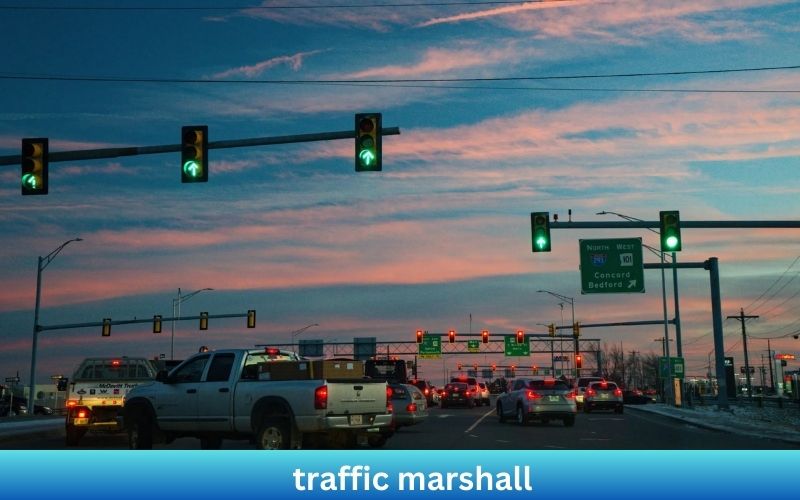Have you ever wondered about the individuals who stand at busy intersections, directing traffic marshall with hand gestures and whistles? These unsung heroes are known as traffic marshalls. Despite their often overlooked presence, traffic marshalls play a crucial role in maintaining road safety and reducing traffic congestion. In this blog post, we will delve into the world of traffic marshalls, exploring their responsibilities, challenges, and the positive impact they have on our communities.
The Role of a Traffic Marshall
Traffic marshalls are responsible for ensuring the smooth flow of traffic at intersections and pedestrian crossings. Their duties typically include:
- Directing Traffic: Using hand signals and whistles, traffic marshalls guide vehicles and pedestrians safely through intersections.
- Managing Traffic Flow: They help prevent traffic jams by ensuring that vehicles move efficiently and avoid congestion.
- Enforcing Traffic Laws: Traffic marshalls may also enforce traffic laws, such as issuing tickets for speeding or running red lights.
- Assisting Pedestrians: They help pedestrians cross busy streets safely, ensuring their well-being.
- Responding to Incidents: In case of accidents or emergencies, traffic marshalls may provide initial assistance and help direct traffic around the affected area.
Challenges Faced by Traffic Marshalls
While traffic marshalls play a vital role in road safety, they also face numerous challenges in their line of duty:
- Hazardous Working Conditions: Traffic marshalls often work in high-traffic areas, exposing them to the dangers of fast-moving vehicles and adverse weather conditions.
- Public Disregard: Despite their efforts, some motorists and pedestrians may disregard traffic marshalls’ instructions, leading to potentially dangerous situations.
- Long Hours and Physical Demands: The job of a traffic marshall can be physically demanding, requiring long hours of standing and directing traffic.
- Lack of Recognition: Traffic marshalls often receive limited recognition for their contributions to road safety.
The Impact of Traffic Marshalls
Despite the challenges they face, traffic marshalls make a significant impact on our communities. Their presence helps to:
- Reduce Accidents: By ensuring the safe flow of traffic and preventing congestion, traffic marshalls contribute to a reduction in accidents.
- Improve Traffic Efficiency: Their efforts help to improve traffic flow, reducing travel times and minimizing congestion.
- Enhance Pedestrian Safety: Traffic marshalls play a crucial role in protecting pedestrians from harm by assisting them in crossing busy streets.
- Foster Community Safety: Their presence contributes to a sense of safety and order within communities.
Training and Qualifications
While specific requirements vary by jurisdiction, traffic marshalls often undergo specialized training to equip them with the necessary skills to perform their duties effectively. This training may include:
- Traffic management techniques: Learning how to direct traffic, use hand signals, and understand traffic laws.
- First aid: Acquiring basic first aid skills to respond to accidents or medical emergencies.
- Communication skills: Developing effective communication abilities to interact with motorists, pedestrians, and law enforcement.
Types of Traffic Marshalls
Traffic marshalls can be categorized into different types based on their roles and responsibilities:
- Municipal traffic marshalls: Employed by local governments to manage traffic at intersections and pedestrian crossings.
- Construction site traffic marshalls: Responsible for directing traffic around construction sites and ensuring worker safety.
- Event traffic marshalls: Deployed at large events, such as concerts or sporting events, to manage traffic flow and crowd control.
- Private security traffic marshalls: Employed by private companies to regulate traffic on their property or at special events.
Technology and Traffic Marshalls
In recent years, technology has played an increasingly important role in supporting the work of traffic marshalls. Some examples include:
- Traffic signal control systems: These systems can be used to coordinate traffic signals and optimize traffic flow.
- Traffic cameras: Cameras can monitor traffic conditions and provide real-time information to traffic marshalls.
- Mobile apps: Apps can be used to provide traffic updates, incident alerts, and navigation assistance to motorists.
The Future of Traffic Marshalls
As technology continues to advance, the role of traffic marshalls may evolve. While automation and technology can assist in traffic management, the human element of traffic marshalls remains essential. Their ability to respond to unexpected situations, make quick decisions, and interact effectively with the public is irreplaceable.
Conclusion
Traffic marshalls are the unsung heroes of our roads, working tirelessly to ensure the safety and well-being of motorists and pedestrians. Their dedication and hard work often go unnoticed, but their contributions to our communities are invaluable. By understanding the role of traffic marshalls and appreciating their challenges, we can better recognize and support their efforts in keeping our roads safe. Let us celebrate the vital work of traffic marshalls and acknowledge their importance in maintaining the well-being of our society.




